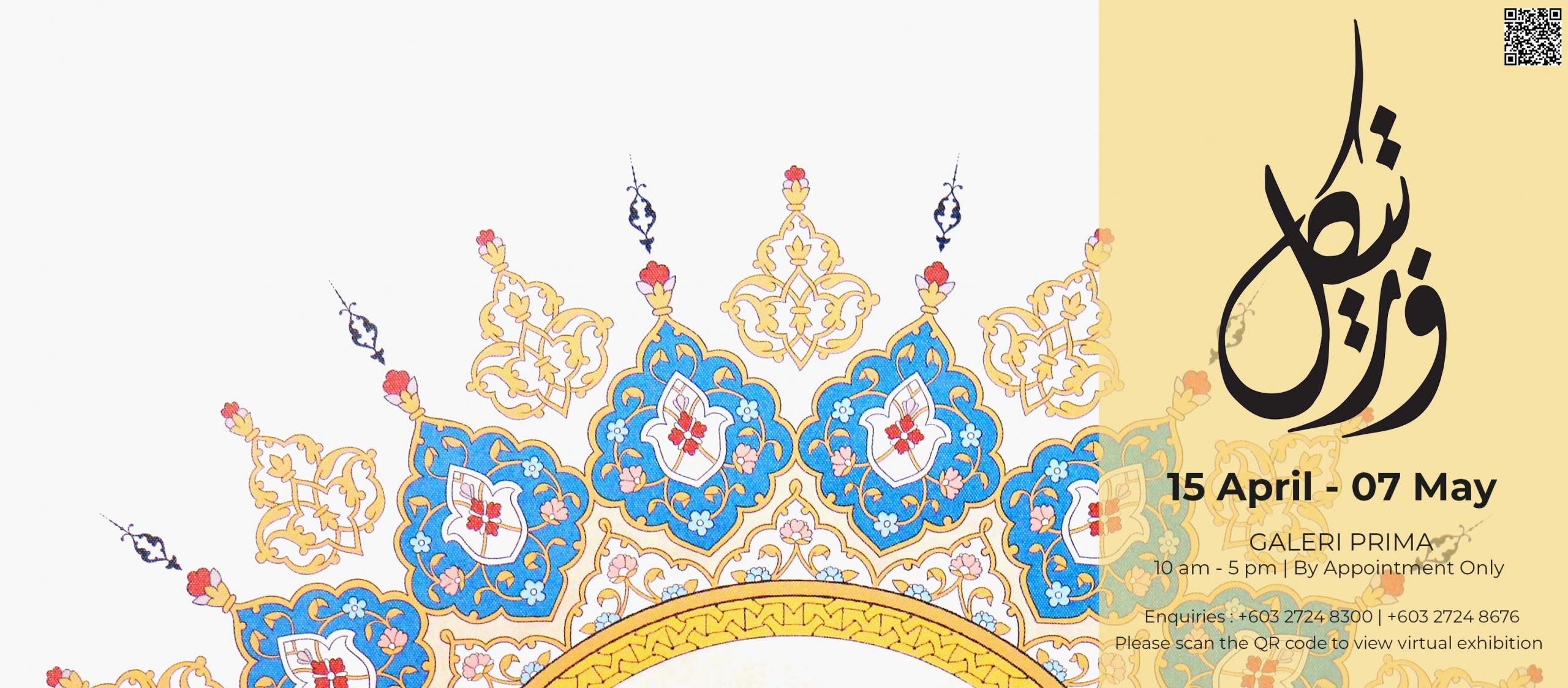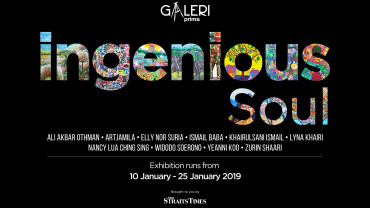VERTICAL defines the humankind vertical relationship with God, while horizontal defines an individual’s relationship with their self, human to human relationships and humanity’s relationship with other creations.
Islam involves absolute submission to God in a way that the part (an individual human being) comes to know, love and obey the Creator and thereby achieves synergy with the Whole (the universe).
They have been put under humiliation [by Allah] wherever they are overtaken, except for a covenant from Allah and a rope from the Muslims. And they have drawn upon themselves anger from Allah and have been put under destitution. That is because they disbelieved in the verses of Allah and killed the prophets without right. That is because they disobeyed and [habitually] transgressed.
The vertical and horizontal relationship concept is the basis of our exhibition.
Focusing on Islamic Art namely Galeri Prima has gathered 16 artists, Ahmad Rajaie Awang, Ainun Jariah Yaacob, Amirul Alwi, Baiti Fauzi, Burhanuddin Bakri, Fadil Sulaiman, Fairuz Paisan, Fauzin Mustafa, Husin Hourmain, Idrus Rani, Jamil Mat Isa, Mat Nor Mahmood, Md Fadli Yusoff, Nabihah Haiyee, Ramlan Abdullah, Shah Tumin and Zaim Durulaman.
Jawi has been a common subject in Islamic art. This is because they are linguistically linked to the Arabic language and scripture used in the Quran.
It has also become an expression of the desire to achieve spiritual purification as well as creating a physical and psychological ambience where the signs of God and His omnipresence are manifested everywhere.
“Nothing is better than the remembrance of God.
This command is a reminder to all mankind to be in constant remembrance (zikir) and contemplation (fikir) of Allah SWT.
at isa, Mat Nor Mahmood, Md Fadli Yusoff and Zaim Durulaman have implemented this concept in their artworks.
More importantly for the calligraphers (khatat) themselves like Ahmad Rajaei Awang, Ainun Jariah Yaacob, Fadil Sulaiman and Shah Tumin, their constant practice of producing these spiritually noble and intricate art forms constitutes a form of zikir that directly contributes to spiritual purification and transformation of their souls.
For as argued by Nasr, the Quranic verses which generally constitute the content of their calligraphic art are “powerful presences” deeply infused with the Divine “baraqah” (blessings) that are spiritually purifying and uplifting.
Jawi also has been defined as a freeform illustration due to its malleability.
Burhanuddin Bakri and Fairuz Paisan successfully explain and define the flow, movement, dynamic, interlocking, intertwined, space, physical and twisted forms of Islamic calligraphy.
Bridging Islamic aesthetic philosophies with contemporary principles and execution, Amirul Alwi, Nabihah Haiyee, Idrus Rani and Ramlan Abdullah composed their artworks using geometric to form an infinite overall imagery, represented in balanced and harmonious arrangements.
Geometric design in Islamic art suggests a remarkable degree of freedom. The complex arrangements and combinations of elements are infinitely expandable.
They fabricated their artwork by repeating and organising geometrical forms according to certain compositional strategies and expressions of rhythm, which stresses both visual logic and emotional expression.
Husin Hourmain, otherwise, uses abstract to draw the mind of the viewer to the notion of Islamic transcendence, the Rukun Iman. His artwork displayed negotiating the visual forms of his last series, Aku: Dalam Mencari Rukun …, a repository that holds working drawings and experiments in colour, composition, technique and concept.
It can be concluded then that Islamic art has a wide range of styles and influences as well as changes within the various periods of its development from a sign of constant remembrance (zikir) and contemplation (fikir) of Allah to basically appreciating the aesthetics of formation.
It is all the more remarkable that, even under these circumstances, Islamic art has always retained its intrinsic quality and unique identity. The four basic components that have been brought up by the artists are calligraphy, vegetal patterns, geometric patterns and abstract.
Learn more about the exhibition: E-Catalogue



































